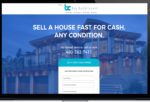What Does Your Intended Customer Profile Look Like?

What Does Your Intended Customer Profile Look Like?
Whether you’re creating a website for yourself or your customer, you will soon learn the importance of putting in the hard work beforehand before building the site itself. While you may be a master of design, are you aware of your customer’s profile and how they expect to appeal to their market?
The first step to creating a website that targets the people willing to buy your goods and services is to build a customer profile. Take note of this information below.
Step One: Identify Your Target Market
If you don’t know who you are trying to sell to, you are going to face a range of problems. Firstly, you are going to struggle to provide products and services that appeal to any market in general. Then, you will also battle to create a website that ticks all the boxes for the very people you were seeking to engage. Identifying your target market is possibly one of the most important parts of creating a customer profile then delivering a website that translates into customers at the other end.
General attributes
The general attributes to pay attention to are their gender, hobbies, preferences, and age. Think about what you are offering and who you think will like those products. For example, if you are a plumber looking for new clients, you will mostly be appealing to commercial clients who can contract work out to you, as well as professional couples looking to build their new home. Usually, they will be over 30, male, and are involved in the construction industry.
The attention span of your target market is also quite significant when you’re building a customer profile for the benefit of your website’s success. You need to know whether graphics are more important, or whether the information is – or an even mixture of both.
Your Clientele
You then need to get to know your customers quite well. Do the research, undertake surveys, and talk to people. Find out their personality type and their buying habits. What do they look for in a website, and in products and services?
Step two: Establish a Profile Criteria
Establishing the criteria for your profile is also essential as, without those finer details, you may struggle to get a base for building the correct type of website.
You need to think about the location in which you’re selling your products and services, the social networks of your customers, their demographics, economy, education, and whether they are one person, a small business, or a corporate empire. After all, there is no point in building a “mom and pop” website when your target market is an international corporation with billions of dollars in turnover.
By putting in the hard work to establish profile criteria, you can then work on aspects of your website such as font, style, and even the correct use of colors.
Step three: What Are They Searching?
Search engine optimization (SEO) is a critical part of creating a customer profile. What are potential customers searching for on the internet? If you don’t know, you can’t expect them ever to find your website.
Using search engine tools online, you can find out commonly searched words and phrases that your key customers are using. You can then incorporate them into the website builder to better your online presence.
SEO is a crucial part of building a customer profile and the subsequent website. You can’t rely on design alone to bring the customers to your door.
Step four: Understand Their Decision-Making Process
Building a customer profile then a website is an excellent first step, but it’s not the final stage in the process. You also need to work to understand what the decision-making process is of your target market.
You need to find out why they would choose your competition over you, or vice-versa, and what features have them sitting up and taking notice.
Most importantly, you need to understand what converts a website visitor into a paying customer? Is it the seamless shopping cart system or the calls to action? And, finally, you need to know what their barriers are, why they wouldn’t make a purchase, as well as what they expect from you.
In essence, you need to understand the inner workings of your customers, and it’s a crucial part of the profiling and web building stage.
While it might seem like a natural process to jump straight into a website build, you run the risk of delivering on design but not on value. Take the time to build a customer profile, appeal to your target market, and create a website that not only looks exceptional but offers your clients a chance to turn visitors into customers.







